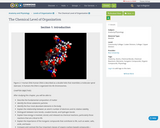
67 Results

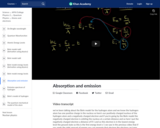
Using shell model diagram to relate absorption to emission. Derives relationship between emitted photon and energy levels, the Balmer-Rydberg equation. Created by Jay.
- Subject:
- Physical Science
- Physics
- Material Type:
- Lesson
- Provider:
- Khan Academy
- Provider Set:
- Association of American Medical Colleges
- Author:
- James Luer
- Date Added:
- 06/23/2014
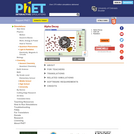
Watch alpha particles escape from a polonium nucleus, causing radioactive alpha decay. See how random decay times relate to the half life.
- Subject:
- Physical Science
- Material Type:
- Simulation
- Provider:
- University of Colorado Boulder
- Provider Set:
- PhET Interactive Simulations
- Author:
- Carl Wieman
- Danielle Harlow
- John Blanco
- Kathy Perkins
- Noah Podolefsky
- Ron LeMaster
- Sam McKagan
- Wendy Adams
- Date Added:
- 07/21/2011
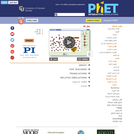
Watch alpha particles escape from a polonium nucleus, causing radioactive alpha decay. See how random decay times relate to the half life.
- Subject:
- Physical Science
- Material Type:
- Simulation
- Provider:
- University of Colorado Boulder
- Provider Set:
- PhET Interactive Simulations
- Author:
- Carl Wieman
- Danielle Harlow
- John Blanco
- Kathy Perkins
- Noah Podolefsky
- Ron LeMaster
- Sam McKagan
- Wendy Adams
- Date Added:
- 09/02/2012
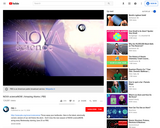
This brief video shows the relationship and movement of particles inside an atom.
- Subject:
- Physical Science
- Material Type:
- Lecture
- Provider:
- NOVA Science
- Provider Set:
- NOVA ScienceNOW
- Date Added:
- 07/15/2013

Anatomy and Physiology is a dynamic textbook for the two-semester human anatomy and physiology course for life science and allied health majors. The book is organized by body system and covers standard scope and sequence requirements. Its lucid text, strategically constructed art, career features, and links to external learning tools address the critical teaching and learning challenges in the course. The web-based version of Anatomy and Physiology also features links to surgical videos, histology, and interactive diagrams.
- Subject:
- Anatomy/Physiology
- Life Science
- Material Type:
- Full Course
- Provider:
- Rice University
- Provider Set:
- OpenStax College
- Date Added:
- 07/23/2019

- Subject:
- Anatomy/Physiology
- Life Science
- Material Type:
- Unit of Study
- Provider:
- Rice University
- Provider Set:
- OpenStax College

In this interactive activity from ChemThink, take a closer look at atomic structure, properties, and behaviors.
- Subject:
- Chemistry
- Physical Science
- Physics
- Material Type:
- Activity/Lab
- Interactive
- Provider:
- PBS LearningMedia
- Provider Set:
- PBS Learning Media: Multimedia Resources for the Classroom and Professional Development
- Author:
- National Science Foundation
- WGBH Educational Foundation
- Date Added:
- 08/09/2007
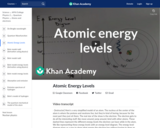
In this video, David explains how an atom can absorb and emit photons with particular values of energy and how to determine the allowed values.
- Subject:
- Physical Science
- Physics
- Material Type:
- Lesson
- Provider:
- Khan Academy
- Provider Set:
- Association of American Medical Colleges
- Author:
- David SantoPietro
- Date Added:
- 06/25/2018

A technology demonstration that could transform the way humans explore space is nearing its target launch date of June 24, 2019.
- Subject:
- Applied Science
- Material Type:
- Primary Source
- Date Added:
- 08/27/2019

This lesson combines a powerpoint lecture and a reading activity to teach students about the theory and structure of atoms.
- Subject:
- Chemistry
- Physics
- Material Type:
- Activity/Lab
- Lesson
- Author:
- Integrated Nanosystems Development Institute (INDI)
- Date Added:
- 07/04/2021
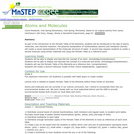
Both of these lessons are classroom activities that require students to build models that display understanding of atoms and molecules. One lesson is structured while the other is guided.
- Subject:
- Chemistry
- Physical Science
- Material Type:
- Activity/Lab
- Provider:
- Science Education Resource Center (SERC) at Carleton College
- Provider Set:
- Pedagogy in Action
- Author:
- Carrie Robatcek
- Date Added:
- 08/10/2012
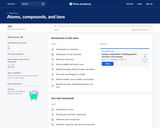
Chemistry is the study of matter, and all matter is made up of atoms. We will learn about elements, atomic number and mass, isotopes, moles (chemistry moles, not the animal), and compounds.
- Subject:
- Chemistry
- Physical Science
- Material Type:
- Lesson
- Provider:
- Khan Academy
- Provider Set:
- Khan Academy
- Date Added:
- 06/26/2019
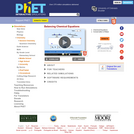
How do you know if a chemical equation is balanced? What can you change to balance an equation? Play a game to test your ideas!
- Subject:
- Chemistry
- Physical Science
- Material Type:
- Simulation
- Provider:
- University of Colorado Boulder
- Provider Set:
- PhET Interactive Simulations
- Author:
- Chris Malley
- Emily Moore
- Kathy Perkins
- Kelly Lancaster
- Patricia Loeblein
- Robert Parson
- Date Added:
- 08/15/2011
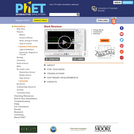
Explore the origin of energy bands in crystals of atoms. The structure of these bands determines how materials conduct electricity.
- Subject:
- Physical Science
- Physics
- Material Type:
- Simulation
- Provider:
- University of Colorado Boulder
- Provider Set:
- PhET Interactive Simulations
- Author:
- Carl Wieman
- Chris Malley
- Kathy Perkins
- Sam McKagan
- Date Added:
- 10/04/2006
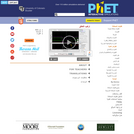
Explore the origin of energy bands in crystals of atoms. The structure of these bands determines how materials conduct electricity.
- Subject:
- Physical Science
- Physics
- Material Type:
- Simulation
- Provider:
- University of Colorado Boulder
- Provider Set:
- PhET Interactive Simulations
- Author:
- Carl Wieman
- Chris Malley
- Kathy Perkins
- Sam McKagan
- Date Added:
- 07/02/2010
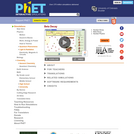
Watch beta decay occur for a collection of nuclei or for an individual nucleus.
- Subject:
- Physical Science
- Material Type:
- Simulation
- Provider:
- University of Colorado Boulder
- Provider Set:
- PhET Interactive Simulations
- Author:
- Carl Wieman
- John Blanco
- Kathy Perkins
- Noah Podolefsky
- Wendy Adams
- Date Added:
- 09/01/2009
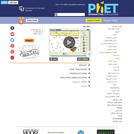
Watch beta decay occur for a collection of nuclei or for an individual nucleus.
- Subject:
- Physical Science
- Material Type:
- Simulation
- Provider:
- University of Colorado Boulder
- Provider Set:
- PhET Interactive Simulations
- Author:
- Carl Wieman
- John Blanco
- Kathy Perkins
- Noah Podolefsky
- Wendy Adams
- Date Added:
- 02/02/2013
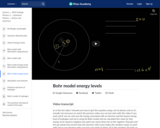
Calculating electron energy for levels n=1 to 3. Drawing a shell model diagram and an energy diagram for hydrogen, and then using the diagrams to calculate the energy required to excite an electron between different energy levels. Created by Jay.
- Subject:
- Physical Science
- Physics
- Material Type:
- Lesson
- Provider:
- Khan Academy
- Provider Set:
- Association of American Medical Colleges
- Author:
- James Luer
- Date Added:
- 06/17/2014
